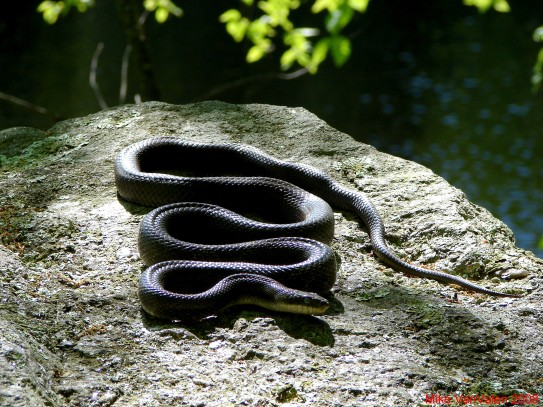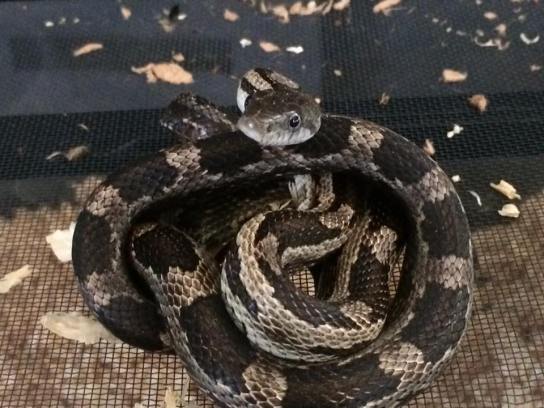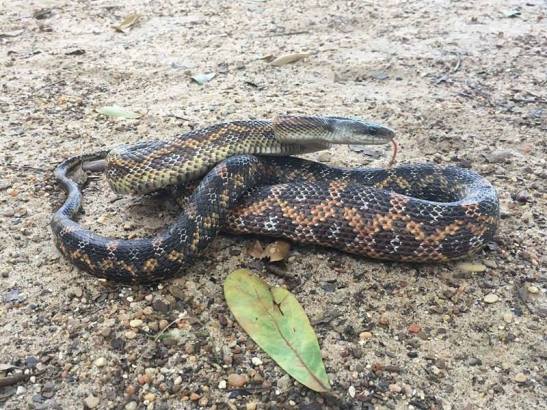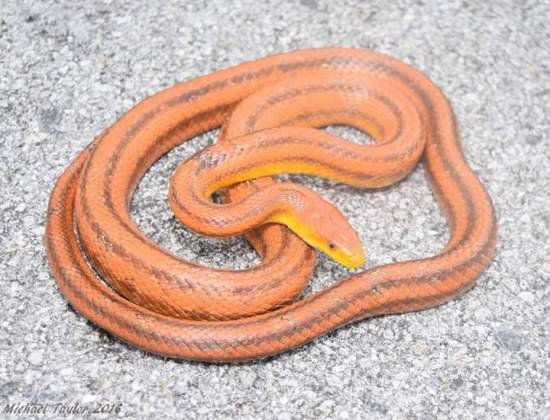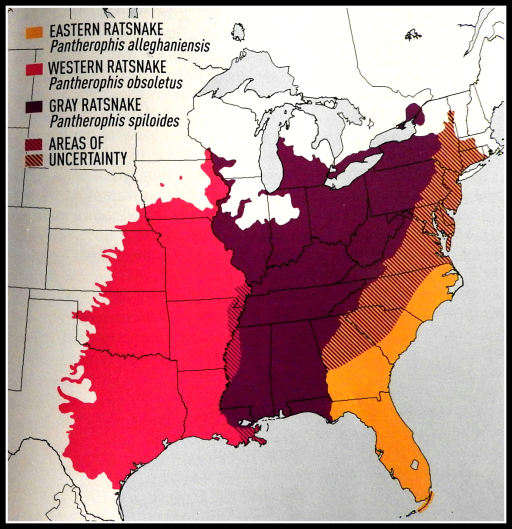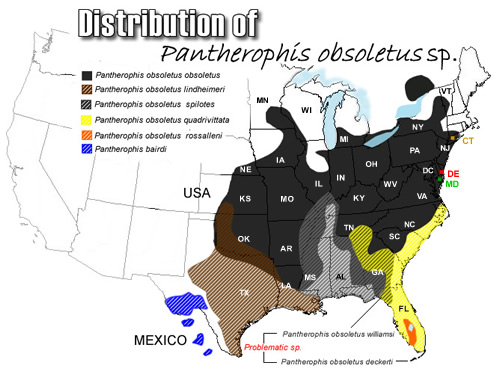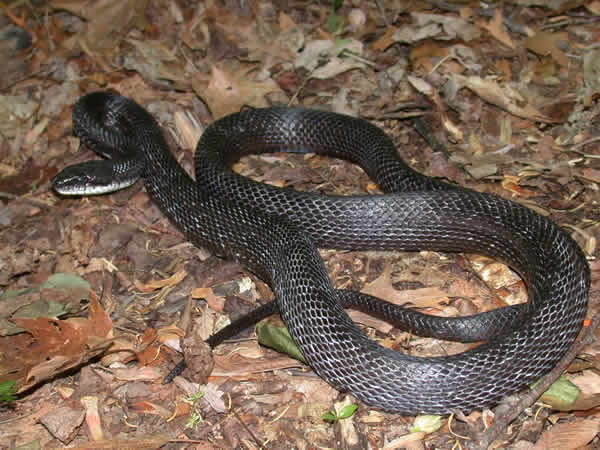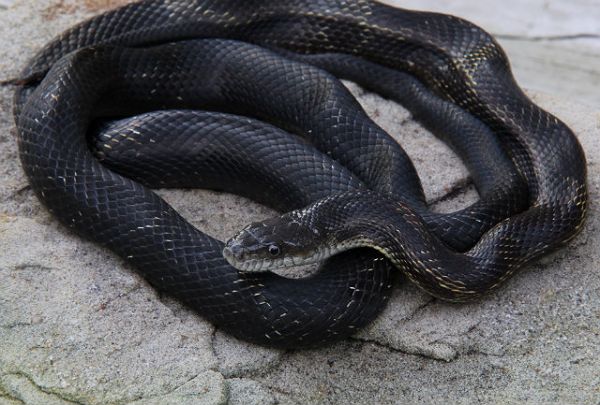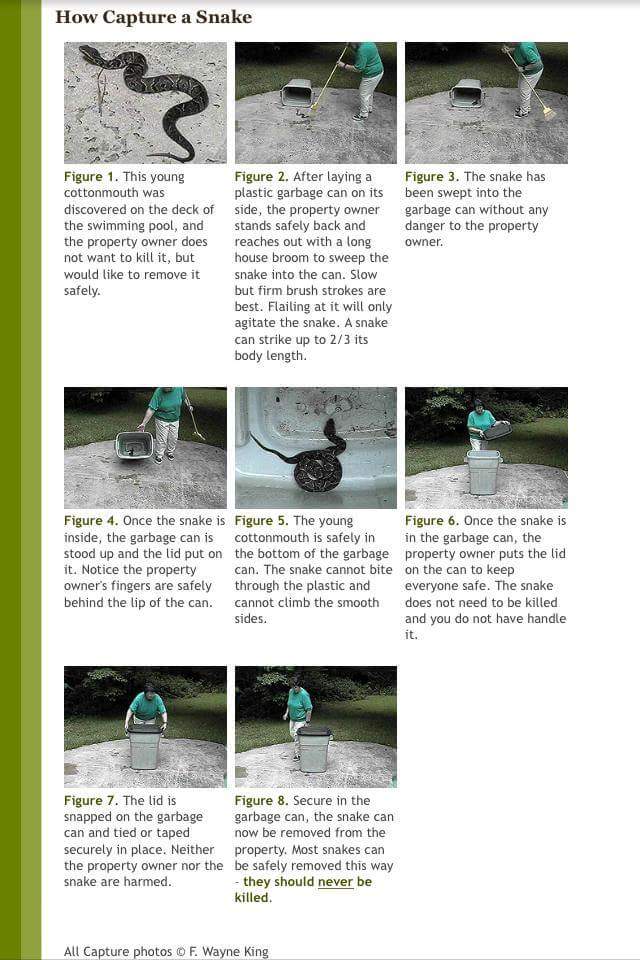There is no shortage of folklore surrounding snakes. Nests of moccasins. Rattlesnakes chasing people down at top speed. Snakes which hoop up and roll away. I’ve heard all of them over the years and I’m sure I’ve forgotten a few, too. Most of these tall tales are absolutely untrue. Others have a grain of truth but have been overly exaggerated by fearful people. This blog entry will focus on one particular (and infamous) tale, the story of the hybrids!
What is a hybrid?
noun, plural form: hybrids
(general) Any of mixed origin or composition, or the combination of two or more different things.
(biology) An offspring resulting from the cross between parents of different species or sub-species.
http://www.biology-online.org/dictionary/Hybrid
For our purposes, the biological definition applies. When two separate species produce offspring, those offspring are a hybrid. So, for example, let’s say a Gophersnake (Pituophis catenifer) mated with a California Kingsnake (Lampropeltis getulae). The young that are produced would be hybrids. Here’s a suspected Gophersnake / California Kingsnake hybrid :
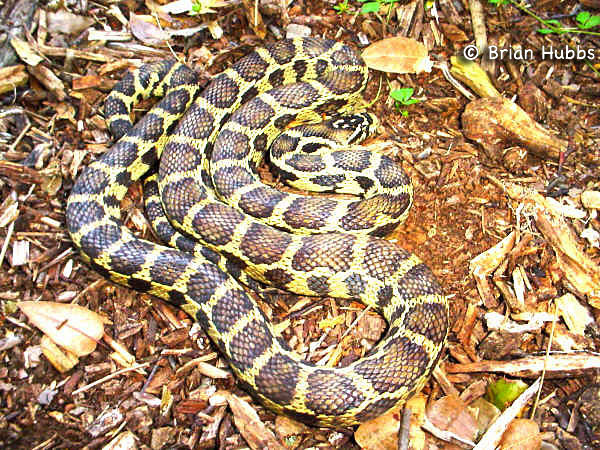
Notice I used the word “suspected”? That’s because this snake never had it’s DNA tested to determine it’s history (more on that later).
So, back to the urban legends. How many of you have ever heard this story, or a variation of it? Black snakes are breeding with rattlesnakes, producing a hybrid snake that is black and is way more venomous than the rattlesnake!
This is a very common myth that I see and hear frequently when talking about snakes with people. It’s utter nonsense. Why? “Black snake” often refers to a Ratsnake species (Pantherophis), and, of course, we all know what a rattlesnake is ; a venomous pit viper from the genus Crotalus or Sistrurus. The rattlesnake is a much more recent group of snakes, evolution-wise, than the ratsnakes. They are both snakes, yes, but enough time has passed that they are “incompatible”. This means that they have much different behaviors, would not see each other as a potential mate, and, as far as sexual reproduction goes, they literally cannot “fit” together (if you catch my drift). This holds true for any other non-venomous snake mentioned in these tall tales, such as a Racer or Bullsnake. In comparison, this would be like a human trying to mate with a spider monkey ; not going to happen.
BOTTOM LINE, this myth is not true. There are NO venomous / non-venomous SUPER VENOMOUS hybrids.
But, what about two snakes that are more closely related? Can they produce a hybrid? Absolutely. However, in the wild, it’s not very common. At least it hasn’t been verified very often. There are several cases of wild hybrids of snakes of the same genus, and even more rare are hybrids of different genera. One such case are two DNA verified Foxsnake (Pantherophis vulpinus) and Bullsnake (Pituophis catenifer) hybrids, one from Iowa, and one from Minnesota. Here’s a photo of one of those snakes –
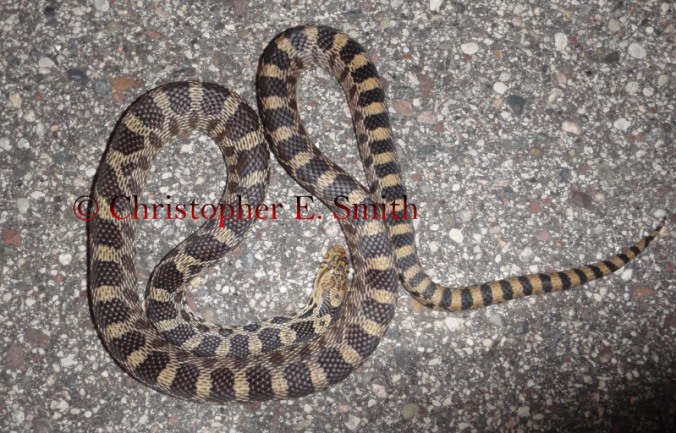
BOTTOM LINE. There ARE naturally occurring snake hybrids, normally from (relatively) closely related snakes.
Remember when I said that the snake in the first photo hadn’t had it’s DNA tested? It’s pretty much impossible to determine a genuine hybrid without testing it’s DNA. We can speculate. We can examine the appearance of the snake (morphology). But we cannot say for certain that a snake is a hybrid by those criteria alone. It seems to me that every time a snake appears to be slightly different from “the norm” people are quick to yell out “hybrid!”. Spend enough time in any snake group on Facebook and you’ll see what I mean. Here’s a great example – the following photo is of a typical Eastern Copperhead (Agkistrodon contortrix) from Kentucky.
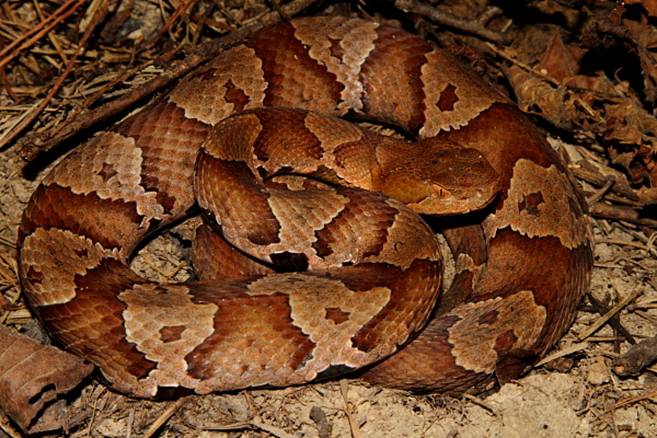
photo © Will Bird
It’s inexplicable that, nearly every time a copperhead like this is posted, someone states that it’s a hybrid with the Cottonmouth (Agkistrodon piscivorus). The argument is that, because the pattern resembles that of some cottonmouths, it must be a hybrid. Here’s a cottonmouth that somewhat resembles the above copperhead.

Because the copperhead has spots within it’s bands, as many cottonmouth also do, people tend to jump to the hybrid conclusion immediately. We simply cannot do this. In this case there are geographic variations in the copperhead that account for it’s appearance.
Are there cases where a hybrid is suspected? Sure. Are most supposed “hybrids” easily debunked by normal variation, aberrant colors/patterns, and other morphological features? In my opinion, yes.
BOTTOM LINE. A true hybrid can only be verified by examining DNA, and not by examining photos on the internet.
CONCLUSION
The subject of hybrids will continue to be a popular one. As usual, there are grains of truth to sift out of the urban legends. True wild snake hybrids appear to be uncommon and the reasons why are not very clear. There is still a lot to learn.
captive snake hybrids are much more common, but that’s a different subject, and I only cover wild snakes here. 🙂
this blog entry is geared toward the average person who is trying to understand the subject of hybrids. What this is NOT meant to be is a technical paper. There is plenty more to learn about the subject of hybrids. I have not covered every minute detail here and I didn’t intend to. Thanks for reading.
For more on the foxsnake / bullsnake hybrid :
© 2017 Mike Van Valen
Wild Snakes : Education & Discussion
